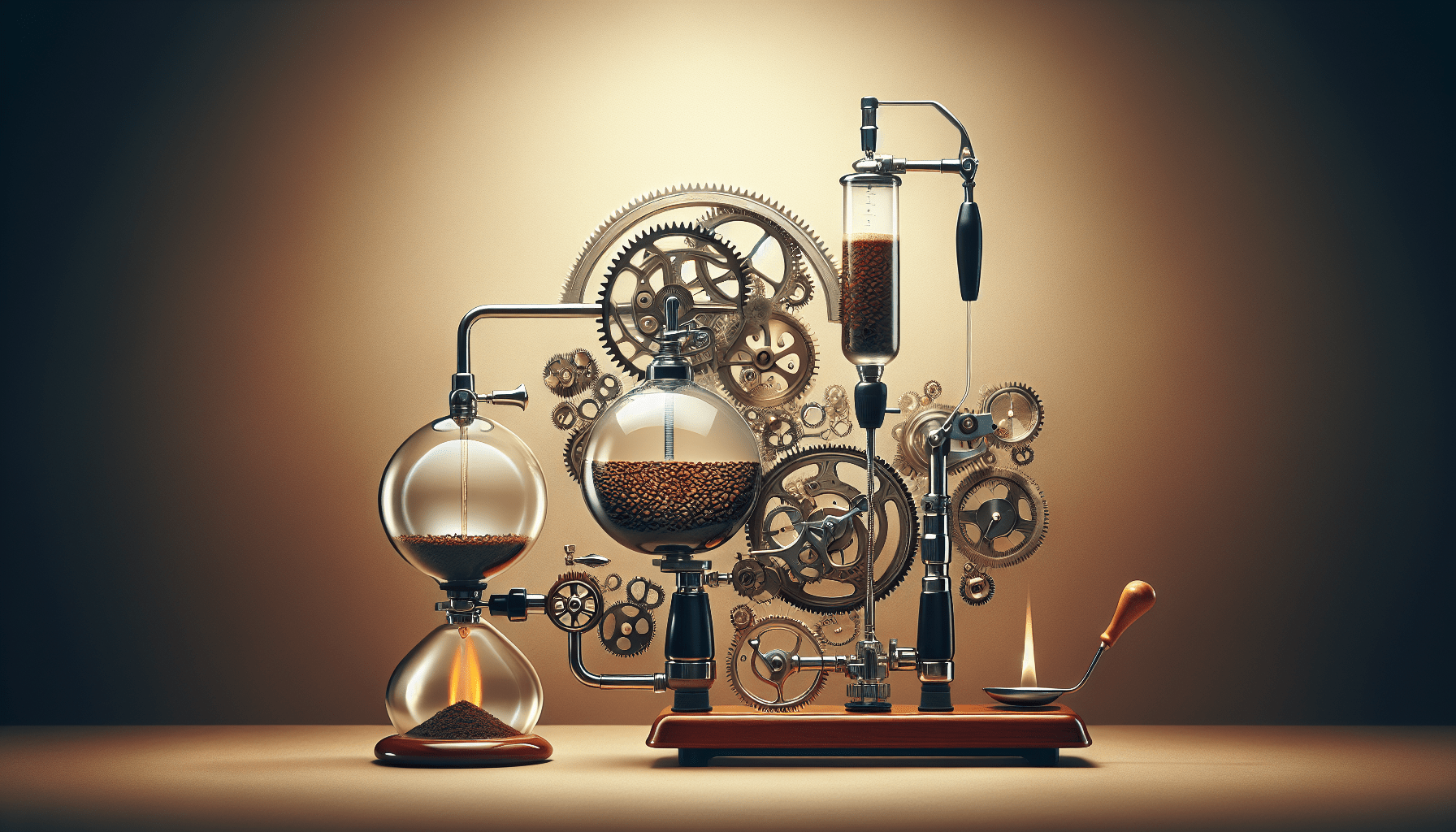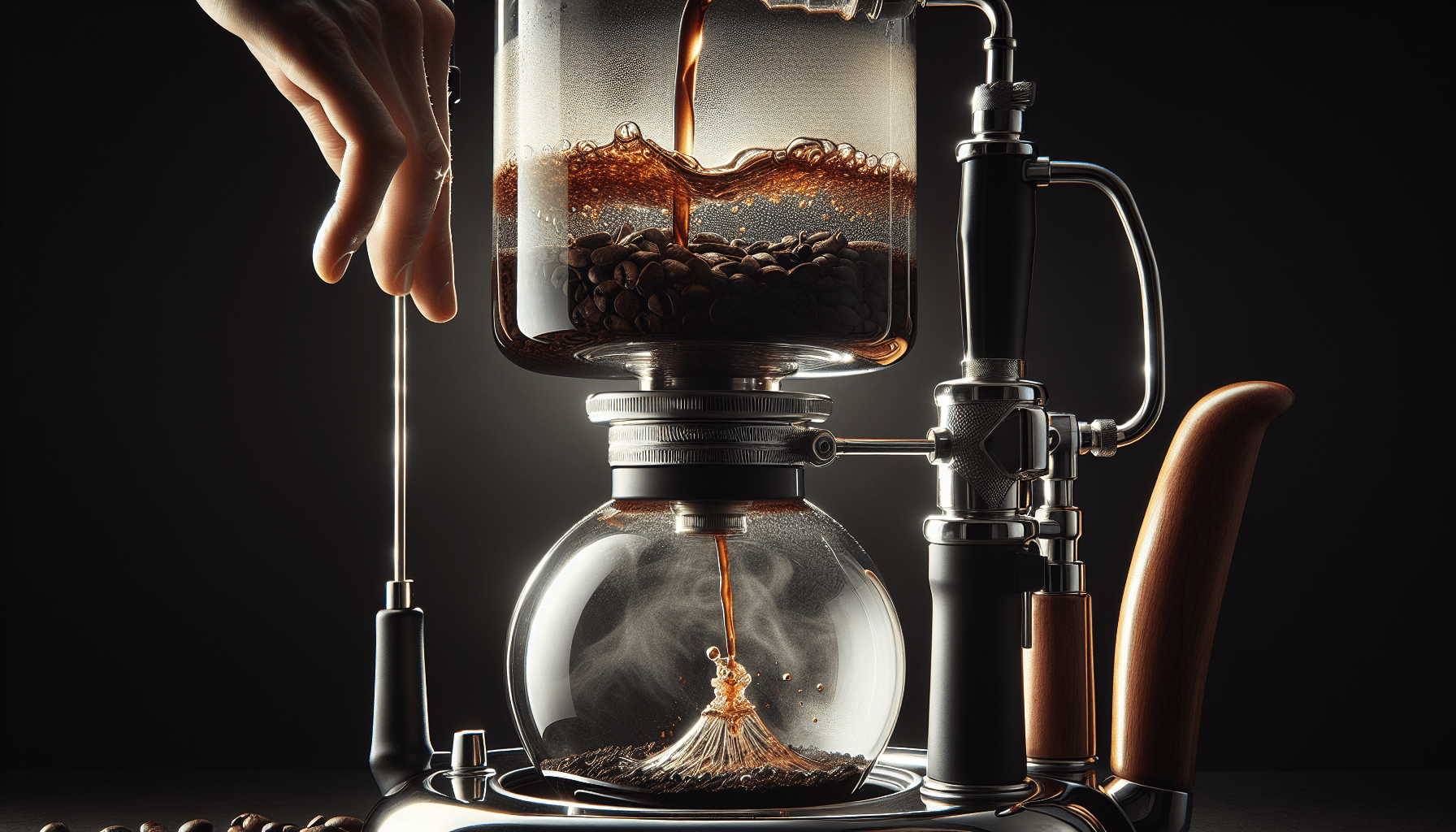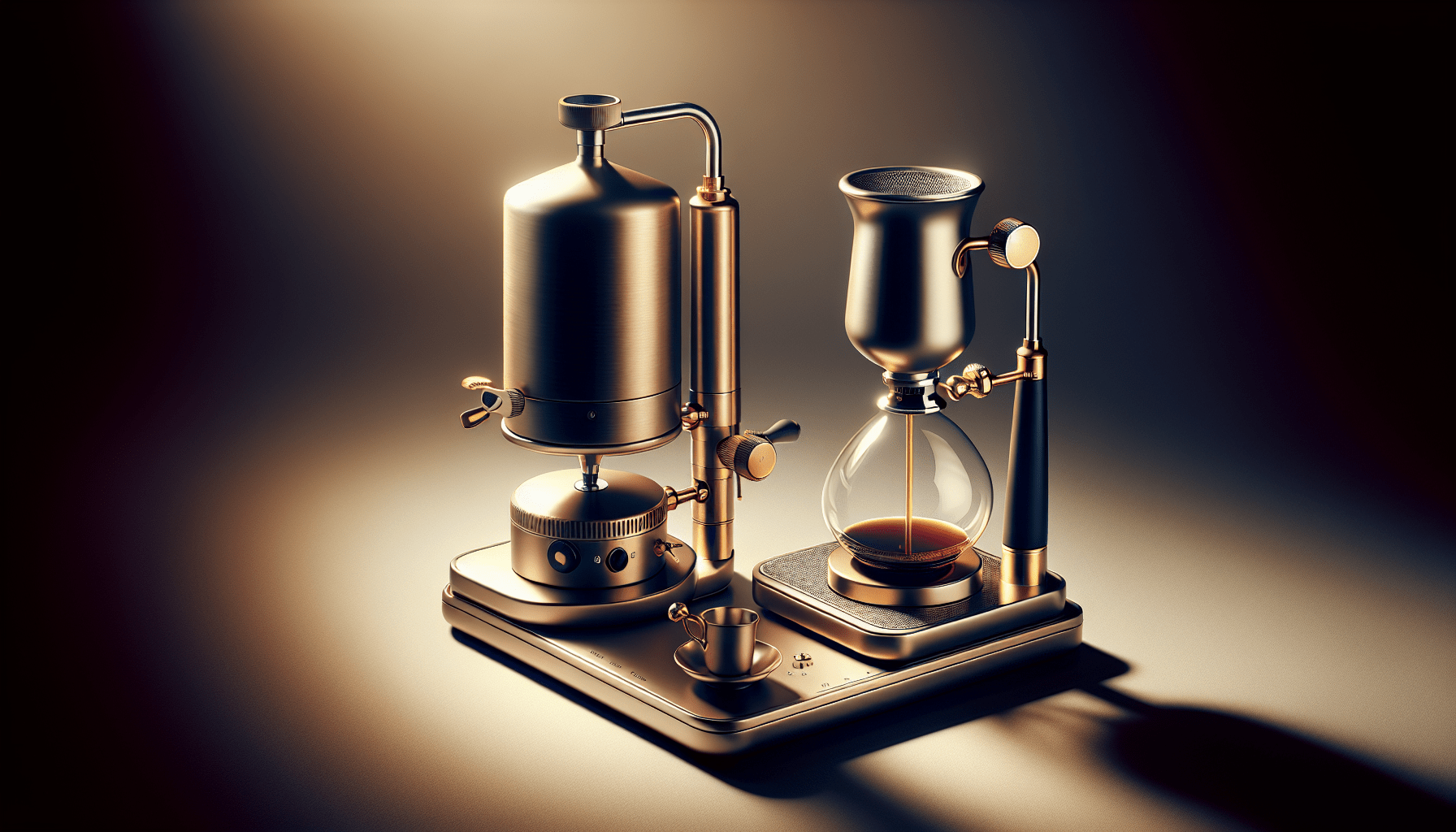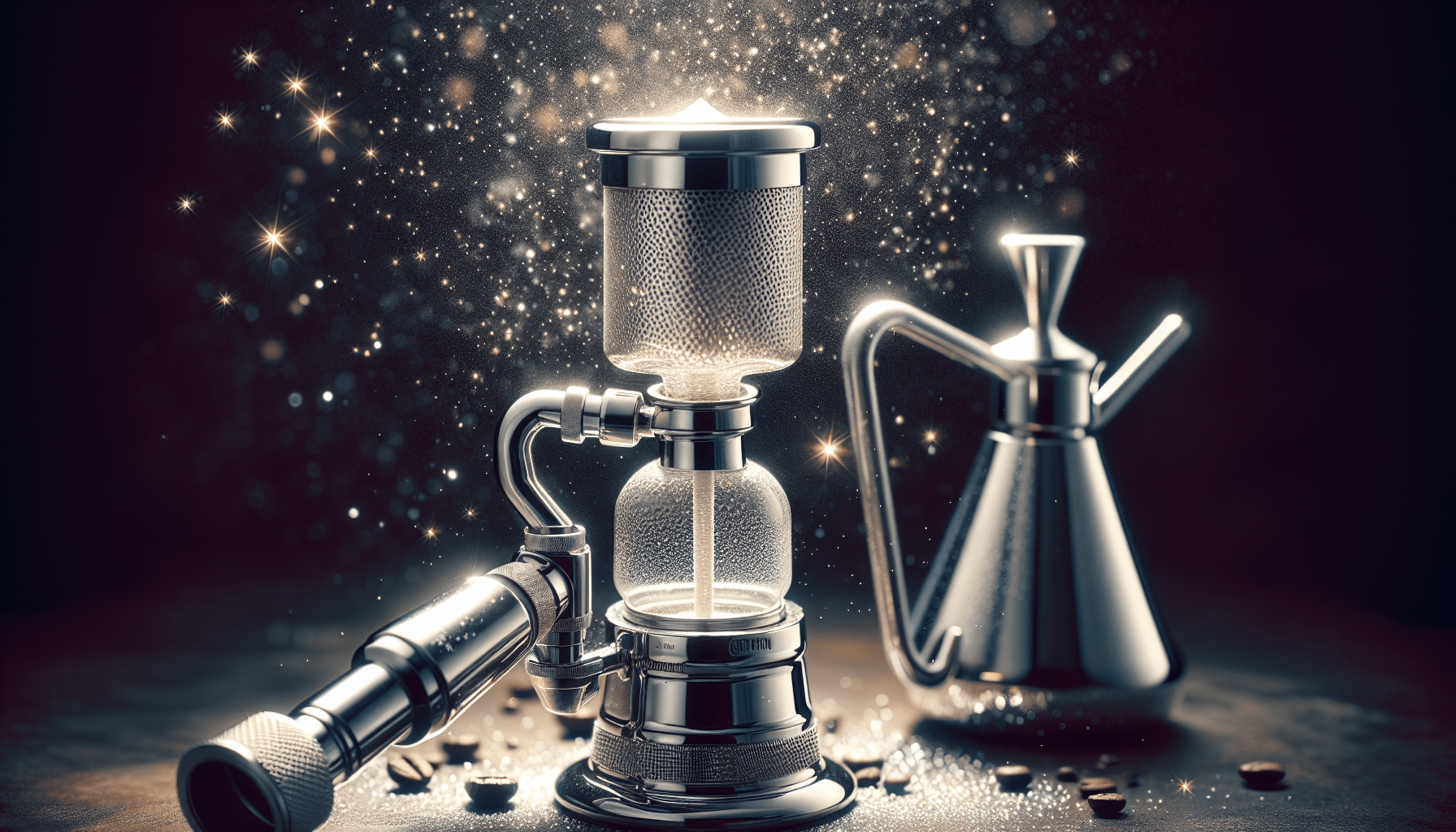Do you enjoy the rich and bold flavor of coffee brewed with a siphon coffee maker? If you find yourself craving a bolder cup or prefer a milder taste, adjusting the strength of your brew is easier than you might think. With a few simple steps, you can customize the intensity of your coffee to suit your personal preferences. Whether you’re an avid coffee enthusiast or simply looking to elevate your brewing skills, read on to discover the secrets to adjusting the strength of coffee brewed with a siphon coffee maker.
Grind size
To adjust the strength of your coffee brewed with a siphon coffee maker, one important factor to consider is the grind size. The grind size refers to the size of the coffee particles, which can range from coarse to fine.
For weaker coffee, it is recommended to use a coarser grind. This allows for faster water flow through the coffee grounds and results in a less concentrated extraction. The larger coffee particles give the water less surface area to extract flavor from, resulting in a milder brew.
On the other hand, if you prefer a stronger coffee, opt for a finer grind. Finer coffee particles expose more surface area to the water, allowing for a more thorough extraction of flavors and oils. The finer grind also slows down the water flow, giving the coffee more time to extract and resulting in a stronger brew.
Experimenting with different grind sizes is key to finding the perfect balance of strength for your personal taste. Adjust accordingly and keep in mind that each coffee maker may have its own recommended grind size.
Coffee to water ratio
The coffee to water ratio is another crucial element in adjusting the strength of your siphon-brewed coffee. By altering the amount of coffee used in relation to the water, you can create a brew that suits your desired strength.
If you prefer a stronger brew, increase the amount of coffee you add to the siphon. With a higher coffee to water ratio, there is a greater concentration of coffee solubles present, resulting in a bolder and more robust flavor.
Conversely, if you prefer a weaker brew, decrease the amount of coffee in proportion to the water. This reduces the overall concentration of coffee solubles, resulting in a milder and more delicate flavor profile.
Finding the right coffee to water ratio is a matter of personal preference, so don’t be afraid to experiment. Start with the recommended ratios provided with your siphon coffee maker and adjust according to your taste.
Brewing time
The brewing time plays a significant role in determining the strength of your siphon-brewed coffee. The duration of the extraction process directly impacts how much flavor and strength is extracted from the coffee grounds.
For a stronger brew, you can extend the brewing time. Allowing the coffee grounds to steep in the hot water for a longer period of time increases the extraction of flavors, resulting in a richer and more intense cup of coffee.
Conversely, if you prefer a weaker brew, you can shorten the brewing time. Reducing the duration of the extraction process limits the amount of flavor extracted from the coffee grounds, resulting in a milder and less concentrated cup of coffee.
It’s important to note that brewing time can vary depending on the type of siphon coffee maker you have. Refer to the instructions provided with your specific model to determine the recommended brewing time for your desired strength.
Water temperature
The temperature of the water used for brewing can also impact the strength of your siphon-brewed coffee. The temperature affects how quickly the flavors and oils are extracted from the coffee grounds.
For a stronger brew, increase the water temperature. Hotter water facilitates faster extraction, allowing the flavors and oils to be released more rapidly. This results in a fuller-bodied and stronger cup of coffee.
On the other hand, for a weaker brew, decrease the water temperature. Cooler water slows down the extraction process, giving the coffee less time to release its flavors and oils. This produces a milder and less intense cup of coffee.
The ideal water temperature for your siphon coffee maker may vary, so it’s recommended to consult the instructions or guidelines provided by the manufacturer. Aim to find the temperature that suits your desired strength and taste preferences.
Pre-infusion
Pre-infusion refers to the initial contact between water and coffee grounds before the full brewing process begins. Adjusting the pre-infusion time can also affect the strength of your siphon-brewed coffee.
To achieve a stronger brew, increase the pre-infusion time. Extending the time the coffee grounds are in contact with the water before brewing allows for a more thorough extraction of flavors and strength.
For a weaker brew, decrease the pre-infusion time. Limiting the contact time between the coffee grounds and water before brewing reduces the extraction of flavors, resulting in a milder cup of coffee.
Remember to refer to the instructions provided with your siphon coffee maker for recommended pre-infusion times. Experiment with different durations to find the perfect balance of strength for your taste.
Stirring
The act of stirring during the brewing process can also impact the strength of your siphon-brewed coffee. Stirring helps to ensure even extraction and distribution of flavors throughout the brew.
To achieve a stronger coffee, stir more vigorously and for a longer duration. This increases the agitation of the coffee grounds with the water, allowing for a more thorough extraction of flavors and strength.
Conversely, if you prefer a weaker coffee, stir less. Minimizing the agitation of the coffee grounds reduces the extraction of flavors, resulting in a milder and less concentrated cup of coffee.
Experiment with different stirring techniques and durations to find the balance that suits your taste preferences. Keep in mind that the type of siphon coffee maker you have may also impact the effectiveness of stirring, so refer to the manufacturer’s instructions for guidance.
Filter thickness
The thickness of the filter used in your siphon coffee maker can also play a role in adjusting the strength of your brew. Thicker filters tend to result in a weaker cup of coffee, while thinner filters can yield a stronger cup.
For a weaker brew, opt for a thicker filter. Thicker filters create more resistance to the water flow, resulting in a longer extraction time and a milder flavor profile.
Conversely, if you prefer a stronger brew, choose a thinner filter. Thinner filters allow for a faster water flow, reducing the extraction time and resulting in a stronger and more robust cup of coffee.
Experiment with different filter thicknesses to find the desired strength for your taste. Keep in mind that some siphon coffee makers may have specific filter recommendations, so refer to the manufacturer’s instructions if available.
Water quality
The quality of the water you use to brew your coffee can also impact its strength. Different water sources can have varying levels of minerals and impurities, which can alter the flavors and overall strength of your siphon-brewed coffee.
For a stronger cup of coffee, consider using filtered or bottled water. These water sources tend to have fewer impurities and minerals, allowing for a purer extraction of flavors and a stronger brew.
Conversely, if you prefer a weaker cup of coffee, tap water can be used. Tap water often contains more minerals and impurities, which can contribute to a milder and less concentrated flavor profile.
The type of water you choose to use is largely influenced by personal preference and the local water quality. Experiment with different water sources to find the perfect balance of strength for your taste.
Bean origin and roast level
The origin and roast level of the coffee beans you choose can significantly affect the strength of your siphon-brewed coffee. Different bean origins and roast levels offer a wide range of flavors and intensities.
To achieve a stronger brew, consider using beans with a darker roast level. Darker roasts tend to have a bolder and more pronounced flavor profile. These beans have undergone a longer roasting process, which results in the caramelization of sugars and the development of rich, complex flavors.
For a weaker brew, opt for beans with a lighter roast level. Lighter roasts retain the natural characteristics of the coffee beans, showcasing their nuanced flavors with a milder intensity.
Furthermore, experimenting with different bean origins can also contribute to the overall strength of your coffee. Various regions produce coffee beans with distinct flavor profiles. Some origins are known for producing more robust and full-bodied coffees, while others offer more delicate and subtle flavors.
Try different combinations of bean origins and roast levels to find the perfect balance of strength for your taste preferences. Coffee lovers often enjoy exploring the vast world of coffee beans to discover their preferred flavor profiles and strengths.
Brewing technique
The brewing technique itself can also impact the strength of your siphon-brewed coffee. Different techniques, such as bloom and pour speed, can influence the extraction process and the resulting strength of the brew.
To achieve a stronger cup of coffee, consider implementing a bloom phase. This involves pouring a small amount of hot water over the coffee grounds and allowing them to “bloom” for about 30 seconds before continuing the brewing process. The bloom phase helps degas the coffee grounds, promoting more thorough extraction and a stronger flavor.
Additionally, adjusting the pour speed can also impact the strength of your brew. A slower pour speed allows for more contact time between the water and the coffee grounds, resulting in a stronger extraction and a bolder cup.
For a weaker cup of coffee, you can omit the bloom phase and use a faster pour speed. This reduces the contact time between the water and the coffee grounds, resulting in a milder and less intense flavor profile.
Experiment with different brewing techniques to find the optimal strength for your taste. Each technique offers its own unique characteristics and can be adjusted to suit your desired coffee strength.
In conclusion, adjusting the strength of your siphon-brewed coffee involves a combination of factors. By experimenting with grind size, coffee to water ratio, brewing time, water temperature, pre-infusion, stirring, filter thickness, water quality, bean origin and roast level, and brewing techniques, you can tailor your brew to your personal preferences. Remember, the journey to finding your perfect cup of coffee is an enjoyable one, so don’t be afraid to explore and discover new flavors along the way. Cheers to your brewing adventures!




